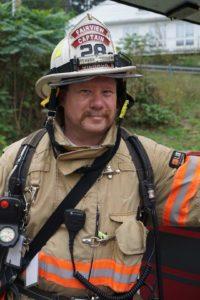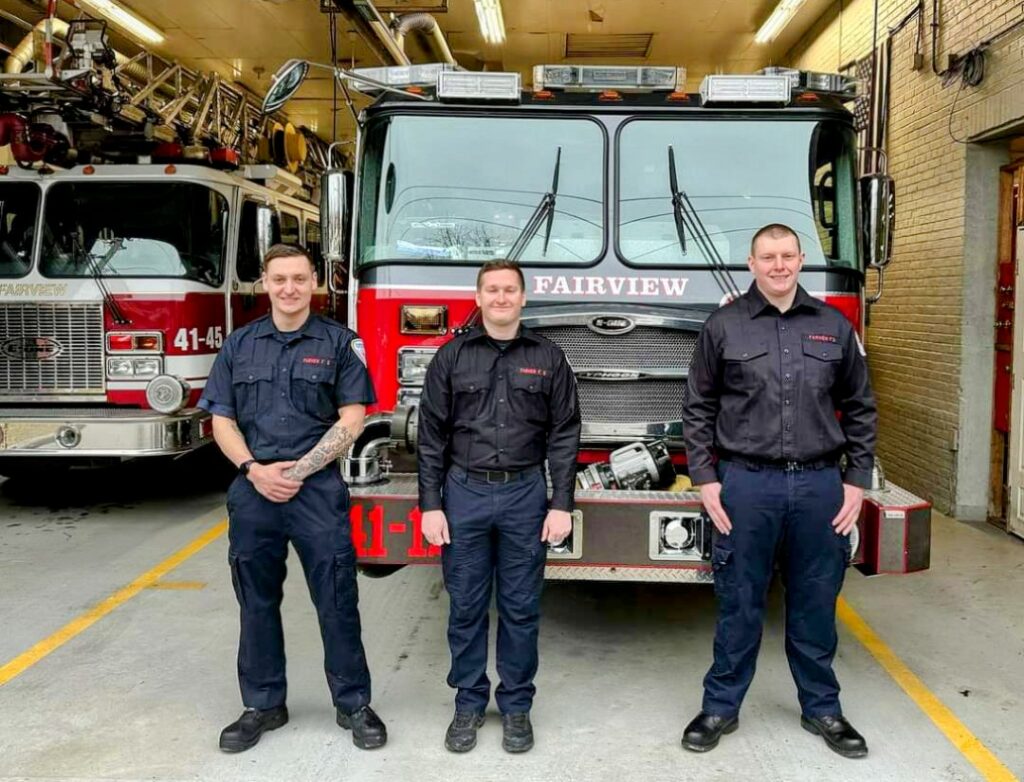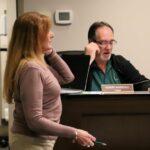
TOWN OF POUGHKEEPSIE – The Fairview Fire District Board of Commissioners and Fire Chief Tim Gilnack are working together to find cost-effective ways to keep the district safe. On Monday, the district welcomed three new firefighters to the ranks to increase the number of firefighters working on each shift. It is part of a long-term plan to bring the manpower up to the staffing requirements set forth by the National Fire Protection Association (NFPA).
Jacob Coy, Kevin DuBois, and Christopher Holsopple began their professional firefighting careers on March 13th. They were spending time learning various things about the internal operations before the three gear up to depart for the 12-week professional firefighter academy being held in Monroe County. This is the first time that the district is not sending recruits to the New York State Fire Academy in Montour Falls. The Monroe County Academy is hosted by a few of the departments in the Rochester area on a rotating basis. The upcoming academy is being hosted by the Gates Fire District. Firefighters that go to the state academy stay on the campus where the training is taking place. That feature is absent in Monroe County. To avoid having the Fairview District find housing for the new recruits, the Brighton Fire District has agreed to let Coy, DuBois, and Holsopple bunk at their firehouse for the duration of the academy.
Until recently, the department, which operates a fire engine, ladder truck, and two ambulances, had four firefighters on duty. Recent hirings have allowed the department to have five on duty with an extra first responder if needed. “There have been times when both ambulances have been out on calls in our district and another call would come in that also required manpower,” said Gilnack. “With the new staff, we will be able to respond to multiple calls in our district, with available manpower.” Gilnack credits the board of fire commissioners for the safety improvements. “The Commissioners approved the new hiring plan in an effort to continue the high standard of service that our taxpayers deserve and we provide, around the clock, every day of the year.”
Gilnack noted that the district is expecting to hire three more firefighters in the near future. Those hires will be attending the fire academy during the summer. “Our plan is to have six firefighters on each shift, around the clock, forth the safety of our firefighters as well as the district we serve.” Addressing the national standards, the chief referenced NFPA standard 1710, which sets forth the staffing levels. “The standards exist to keep everyone safe, and that is our intention,” he said.
The minimum staffing requirements for career fire departments such as Fairview address the organization and deployment of fire suppression operations, emergency medical services, and special operations provided to the public by career firefighters. According to NFPA 171, The initial full alarm assignment for a fire department to a structure fire in a typical 2000 square-foot, two-story, single-family dwelling without a basement and with no other structures in the immediate vicinity (exposures) must provide for a minimum of 16 firefighters. The number increases to 17 if an aerial ladder truck is used at the fire.
NFPA 1710 continues to require that engine companies be staffed with a minimum of four on-duty members. Additionally, the NFPA is required to identify minimum staffing levels as necessary, depending on the type of structure fire they are responding to. Fairview has several large structures including MidHudson Regional Hospital and Marist College in their response area. Those types of structures require a substantially larger number of firefighters to respond to them in the event of a fire. To compound the issue, the board of commissioners is handcuffed when it comes to setting the tax rate for the district because many of the larger properties are tax-exempt, leaving the remaining taxpayers to fund the district.








